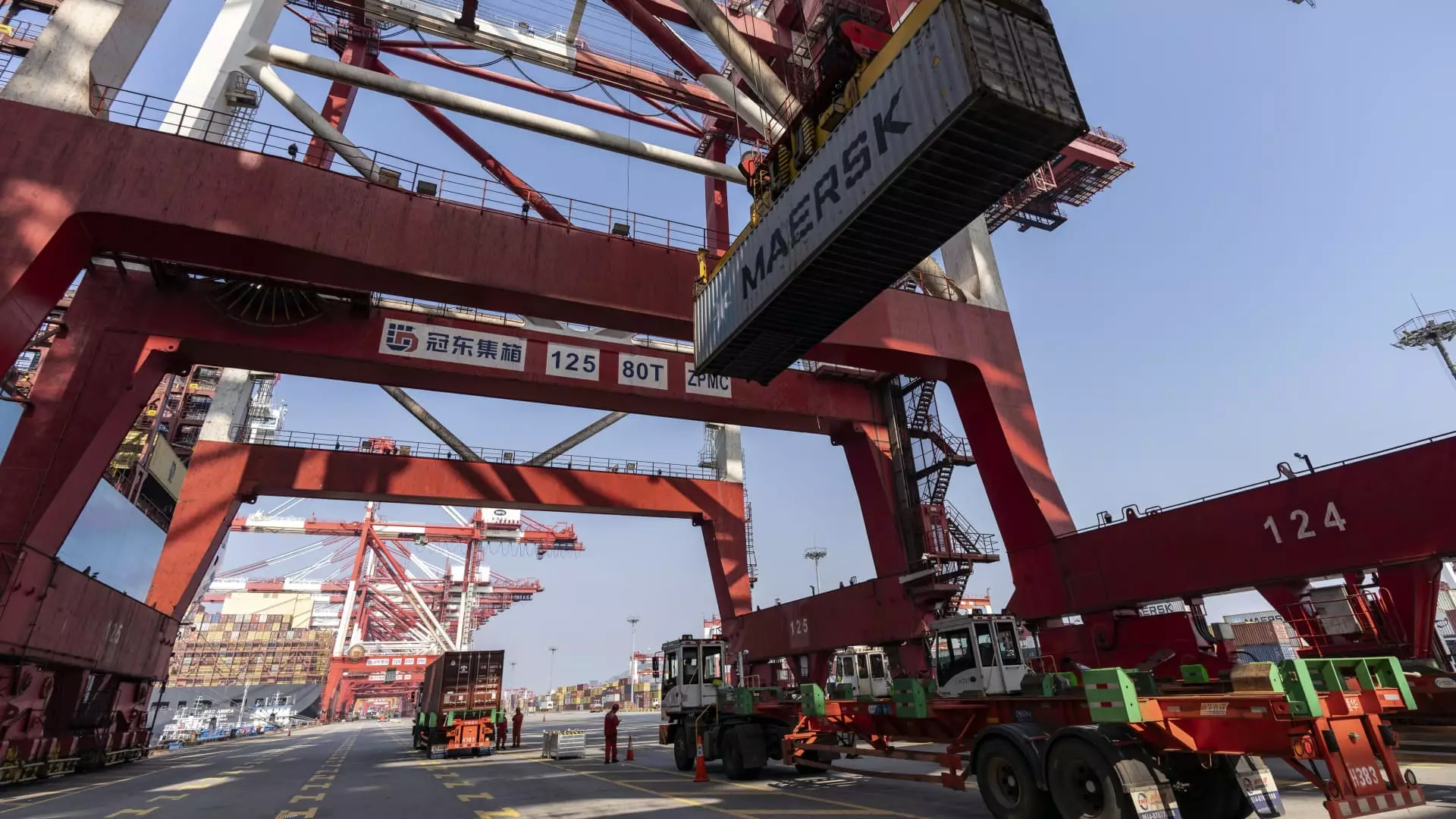In September, China’s trade figures unveiled a concerning trend that has raised alarms about the resilience of the world’s second-largest economy. Both exports and imports underperformed in comparison to analysts’ expectations, indicating potential weaknesses in the economic framework. Official customs statistics reported a modest 2.4% year-on-year increase in exports when measured in U.S. dollar terms, while imports registered a mere 0.3% rise. These numbers fall short of expectations, with economists anticipating an export growth of 6% and a 0.9% increase in imports. Such dips in trade performance invite scrutiny as exports have historically been a cornerstone of China’s economic expansion.
The recent underperformance of Chinese exports substantially compounds concerns regarding the nation’s economic trajectory. For the past several years, a stagnant consumer sector coupled with a tumultuous real estate market has hindered robust economic growth, placing increasing pressure on the export sector. Zhiwei Zhang, the president and chief economist at Pinpoint Asset Management, noted that navigating heightened trade tensions would prove challenging for China moving forward. The imposition of tariffs by the U.S. and the European Union poses a significant risk to sustained export growth, particularly as economies grow more interconnected but simultaneously more contentious.
As the world’s largest trading partner, the U.S. continues to impact China’s trade dynamics. In September, Chinese exports to the U.S. saw a modest increase of 2.2%, while imports surged by 6.7%. This uneven growth exchange highlights the complexities of trade relations, underlining how geopolitical tensions can directly influence economic metrics.
Amidst the observed trade decline, China’s Ministry of Finance has hinted at a possible adjustment in fiscal policies aimed at stimulating the economy. Anticipated measures include a rise in the fiscal deficit, potentially designed to boost construction activity and elevate demand for essential industrial commodities. Experts from Capital Economics assert that increased fiscal expenditure could lead to a rebound in import volumes in the short term.
Despite these government intentions, it remains crucial to assess the scale and efficacy of such interventions. Analysts suggest that without substantial and concrete fiscal measures, any increase in demand may only provide a temporary solution to deeper systemic issues besetting the Chinese economy.
Delving into specific trade categories reveals a mixed performance landscape. Although exports of automobiles recorded a year-on-year rise of 25.7%, several other sectors reported declines. Exports of footwear, toys, and smartphones, for instance, witnessed a downturn, creating a patchy outlook across the economy. Notably, certain sectors such as home appliances, integrated circuits, and ships displayed resilience, suggesting that not all areas are equally affected by the economic malaise.
On the import side, the picture also reflects volatility, particularly evident in crude oil imports that plummeted by 10.7%. This decline signals not just a drop in demand but also an unsettling indicator of slowed industrial activity. Conversely, imports of natural gas and coal experienced increases, showcasing varying sectors’ responses to the shifting economic landscape.
The recent trade data dovetails with signs of a struggling domestic economy. In light of underwhelming consumer sentiment, evidenced by a meager 0.1% rise in the core consumer price index—its slowest rate since February 2021—the future appears uncertain. Moreover, amid significant holiday periods and celebrations—most notably the Mid-Autumn Festival and the Golden Week—expectations surrounding domestic tourism-induced economic revival were met with disappointing price declines.
This lingering stagnation casts a shadow over forthcoming economic indicators, including GDP growth rates, retail sales, and industrial output, which are due for release shortly. As authorities grapple with the ramifications of latest stimulus announcements, apprehensions loom about their effectiveness and timing in reversing the trend of economic sluggishness.
Collectively, the September trade figures evoke serious reflections on the broader trajectory of China’s economy. Factors such as international trade tensions, shifting fiscal strategies, sector-specific performance, and weakened domestic demand converge to create a complex economic landscape. As China’s leadership prepares to unveil further economic metrics and potential interventions, critical attention must remain focused on how these elements balance against the pressing need for robust and sustainable growth. The road ahead is fraught with challenges, yet opportunities exist for revitalization through strategic policymaking and innovative sectoral initiatives.

